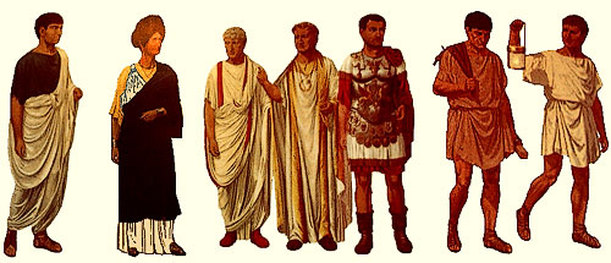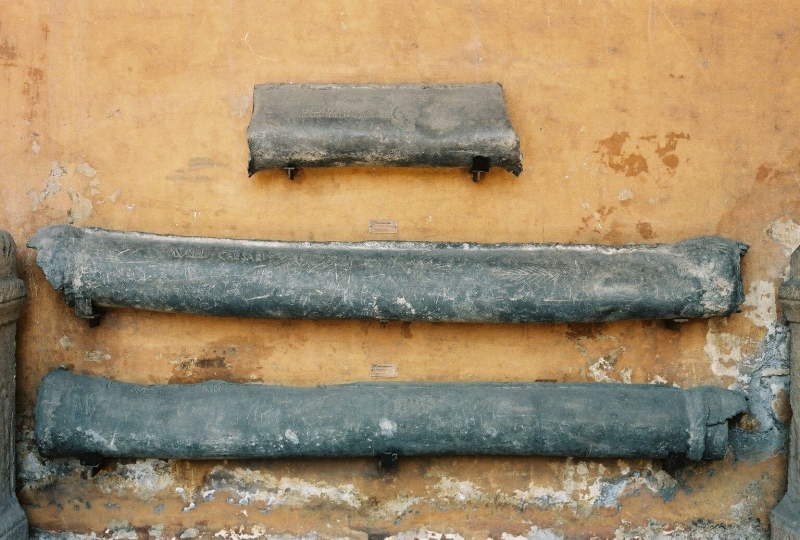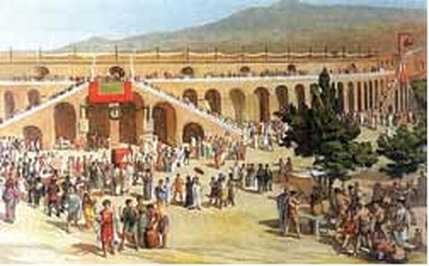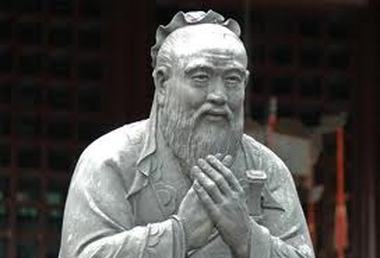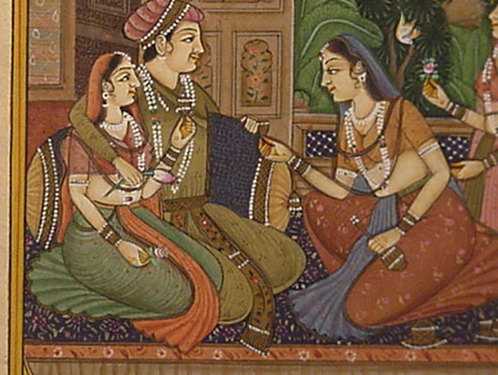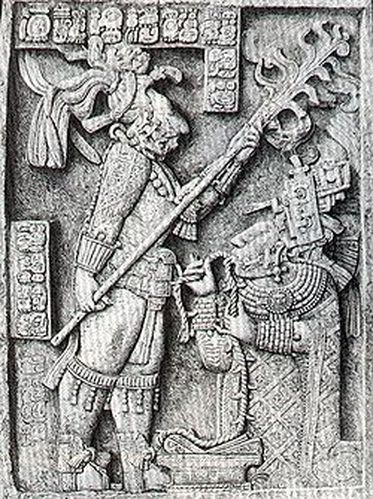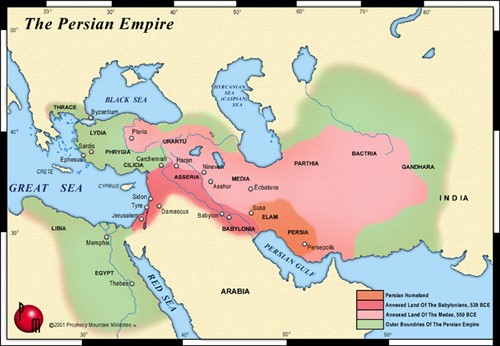Social Hierarchies
Roman Empire
The Basics
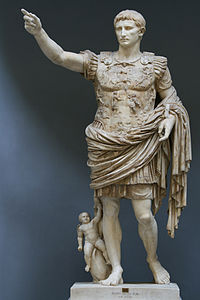
Augustus, the first Roman emperor
In Rome, there was some social mobility, but it was quite rigid. There were four general classes, which are the emperors, patricians, plebeians, and slaves. The emperor and his family sat at the very top of the social pyramid. The patricians are land-owning noblemen with "political power", and you can only be a patrician through birth. The upper class can be separated into two distinct sectors. The first was the Senatorial class, which was politically based and dominated by nobles. To be in this class, you had to prove you had an ancestor that included at least one consul. The second was the Equestrian class, which was economically based. To be in this class, you had to prove that you had a minimum amount of wealth. In the next class, the plebeians were all other free people, including the merchant class and general workers, and it is impossible for them to move up to the patrician class. The slaves make up about 33% of the population of the empire. Most slaves came from conquered territories and were multi ethnic, which shows that not just one race was discriminated against. Some had the possibility of freedom and could move up to plebeian status; however, until then, slaves were the property of their owners. Slaves did not have a distinctive dress, but some wore a metal collar to show ownership.
In Rome, it was not enough to simply belong to the upper class, but it was necessary to show your status. An upper class meant nothing unless it was publicly recognized. Patronage was a major way to show the publicly acknowledged inequality. This drove a bigger stake in between classes due to the patron-client relationships. For example, patrons would donate large sums of money as a benefactor of a project or group. Another example is a patron funding and protecting a lower class individual, and this relationship runs through the families. In exchange, the lower class individuals had special duties and services owed to the patron. This clearly left a wide social gap because the patricians were seen as superior while the plebeians were seen as inferior. The patricians only helped thee less fortunate to broadcast their rank, and in turn, the plebeians are indebted to them. An example of a daily ritual is the morning greeting where clients all gather at their patron's homes. They wait to be summoned, and they greet their patron. On some occasions, the clients will be the patron's entourage for an event, which was simply a way to show a patrician's high status.
The way the upper class dressed was a major indicator of status, and it made their rank visible to everyone. Patrician status was indicated by tunics with broad stripes. This made the patricians stand out from the common people, and this made it clearly visible to everyone else that these people were of higher rank. Typically, in a higher class, the dress was more distinguishably marked. Plebeian status was indicated by the common togas, and a lower rank's dress was typically simple, common, and not marked at all.
In Rome, it was not enough to simply belong to the upper class, but it was necessary to show your status. An upper class meant nothing unless it was publicly recognized. Patronage was a major way to show the publicly acknowledged inequality. This drove a bigger stake in between classes due to the patron-client relationships. For example, patrons would donate large sums of money as a benefactor of a project or group. Another example is a patron funding and protecting a lower class individual, and this relationship runs through the families. In exchange, the lower class individuals had special duties and services owed to the patron. This clearly left a wide social gap because the patricians were seen as superior while the plebeians were seen as inferior. The patricians only helped thee less fortunate to broadcast their rank, and in turn, the plebeians are indebted to them. An example of a daily ritual is the morning greeting where clients all gather at their patron's homes. They wait to be summoned, and they greet their patron. On some occasions, the clients will be the patron's entourage for an event, which was simply a way to show a patrician's high status.
The way the upper class dressed was a major indicator of status, and it made their rank visible to everyone. Patrician status was indicated by tunics with broad stripes. This made the patricians stand out from the common people, and this made it clearly visible to everyone else that these people were of higher rank. Typically, in a higher class, the dress was more distinguishably marked. Plebeian status was indicated by the common togas, and a lower rank's dress was typically simple, common, and not marked at all.
Lead Poisoning |
Social CollapseThe Roman Empire had many problems with society that eventually led to a social collapse. The rich were getting richer, and the poor were getting poorer. With so many slaves, slave labor put the lower class out of work so most people did not have any jobs. In effort to avoid complete poverty, the poor would sell their land to the rich, which in turn made the rich richer. This led to the destruction of traditional values and a weakened Roman military. Bread circuses also went on to "aid" the poor, but it was merely a distraction, and it led to a greater collapse. Also, a wealthy social status symbol was to have lead plumbing, and the elites also used lead vessels for cooking. Lead is a very harmful poison, and the elites experienced lead poisoning. This led to a decrease in the elites' abilities to maintain order and power in the empire. When there are people with a mental deficiency running the government, the civilization will collapse.
|
Greece
Basics
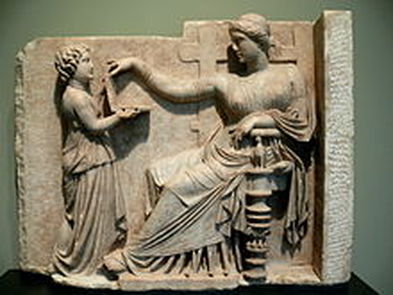
Slavery was brutal, but it allowed for art and philosophical advancements.
In Greece, society was initially divided into an aristocracy and free landowners. Due to an increasing and more complex economy, the social structure became more hierarchic and diverse. Each city state was known as a polis, and each polis shared a common culture. In each polis, there were three general groups. There were citizens, free people, and non-citizens. Citizens were adult males who were often took part in business or commerce. Free people did not have any political rights. Non-citizens is just a nice way of saying “slaves”, and they did not have any rights. In Athens, slaves made up about 33% of the population. The slavery was brutal with little chance of emancipation. They were property of their owners in which they became laborers, domesticated servants, and cultivators. Slavery gave the people of greece the free time to create works of art and philosophy. Slavery was also relied on heavily during constant warfare. Slavery also led to the decrease in the development in agricultural technology because there was no reason to make things easier when there were slaves to do the work. There was no need to work on efficiency with slaves. Also, there was quite a bit of socioeconomic mobility in Greece. An example of this is Themistocles. Themistocles was an Athenian general that rose up from the aristocratic class to rule the empire. He was popular with the lower classes and frequently went against the nobles.
During the Hellenistic period, there was much prosperity. However, only the rulers, upper classes, and merchants benefited from it. The cost of living and unemployment were so high that the government had to supply free grain, which was detrimental to the economy and solved no problems. Slavery also declined during the Hellenistic period because of the crumbling economy. At this point, wages were so low that hiring a free laborer was cheaper than maintaining a slave. Also, land was confiscated from the landowners, and it was leased to tenants so that the king could make more money. The tenants could not leave their land until after harvest, and they could not run away because they became bound as serfs. Some small independent farmers became overwhelmed with debt, and they then became serfs as well. In general, as the upper class prospered, the lower class faced a huge struggle, and this drove an even larger stake between the classes.
During the Hellenistic period, there was much prosperity. However, only the rulers, upper classes, and merchants benefited from it. The cost of living and unemployment were so high that the government had to supply free grain, which was detrimental to the economy and solved no problems. Slavery also declined during the Hellenistic period because of the crumbling economy. At this point, wages were so low that hiring a free laborer was cheaper than maintaining a slave. Also, land was confiscated from the landowners, and it was leased to tenants so that the king could make more money. The tenants could not leave their land until after harvest, and they could not run away because they became bound as serfs. Some small independent farmers became overwhelmed with debt, and they then became serfs as well. In general, as the upper class prospered, the lower class faced a huge struggle, and this drove an even larger stake between the classes.
Unique AthensIn Athens, citizens could take part in government. In the beginning, only the wealthy and people of high rank had citizenship rights. These rights include voting in an assembly, holding public office, and fighting in the army. However, the middle and lower class men gradually gained these rights. With support of the poorer classes, benevolent rulers emerged, known as tyrants, and the social gap lessened. When rulers do not support the lower class, the social gap widens. In Athens, the social gap was not as big due to the fact that the lower classes were gaining more rights when it came to the government by allowing them to have a voice. This enforced a sense of relative equality. However, when it came to serious issues, the upper class sat in council with the king. The equality was only stretched so far because it was only the males that had any rights. Women were still seen as completely inferior.
|
The Han Dynasty
Basics
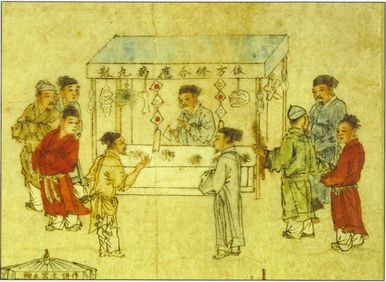
The government feared a wealthy merchant class, so they were oppressed.
The Han Dynasty was highly structured with distinct social classes and not a lot of social mobility. At the top of the social pyramid were the elites, and they made up the government. The emperor shared power with bureaucracy and nobility. The emperor's subjects could not address him by name. They were only allowed to refer to him indirectly, such as saying "The Superior One". Also, if any noble, government minister, or commoner entered the palace without permission, they would be punished by death. The emperor could override any decision, but he typically listened to the majority consensus. Also, the emperor could grant pardons and amnesties. The next highest class consisted of the landowners. They typically relied on poor tenant farmers to cultivate the land, and they paid rent with about fifty percent of their produce. The landowners supplied the tenants with land, tools, animals, and a small house. With this, the landowners could employ the peasants and spread the wealth. The landowners could become government officials, but this was pretty much the extent of social mobility. Next were the merchants and skilled laborers. The merchant class was looked down upon by the government, and it was taxed heavily. Merchants were forced to wear white clothing, which was a symbol of their lowly status. Merchants were also seen as dangerous to the government because many escaped being registered. They became very rich due to the intricate trade network and not having to pay the many taxes that were in place to repress the merchant class. This shows that the government was fearful of an uprising from the rising merchant class, which would lead to a loss in the Mandate of Heaven. At the bottom of the pyramid were the peasants, and if you were born a peasant, then you were stuck there. The Han Dynasty did not have any slaves. There were some debtors, indentured servants, and violent criminals that did a "slave's duty". This small group made up about one percent of the entire population. By not having slaves, peasants were hired to do jobs such as farming. This allowed for the poor to make a living and carry on in society. Also, considering it was paid labor for agriculture, advancements in technology emerged. They focused on creating the most efficient technology possible to make farming easier and more efficient. In the Han Dynasty, social classes dictated status and not wealth or power.
Religious ImpactA major development during the Han Dynasty was the civil service examination, which ensured excellent education and communication in government. The civil service exam was based on the teachings of Confucius, so religion played a role in government and social classes. Government officials were chosen based on this exam, which was a very difficult test that lasted several days. The merit exam was available for everyone to take, but typically only the rich could afford to prepare for it. This means that the rich were the ones with government power, but they were qualified to have it. The lower classes had no voice in government, but due to Confucianism, they were typically not oppressed because Confucius worked to fix social and moral issues. By having people in power based on merit, more moral and intelligent decisions can be made for the empire and people in lower social classes will not be treated as poorly as in other empires.
|
The Guptan Empire
Basics

The Guptan social structure was very rigid due to the caste system.
In the ancient Indian civilization Gupta, the social structure was extremely rigid and offered nearly no movement up the social classes in any circumstances. The class that you were in was always determined by the class that you were born into, because there was absolutely no movement up and little movement down the social structure. This was largely because of the development of the caste system, which remained a prevalent way of ranking social classes in India up until the mid twentieth century. The caste system in the Guptan Empire was divided into five main classes, the Brahmin, the Kshatriyas, the Vaishyas, the Shudras, and the Panchama. The Brahmin, was considered the highest tier of people in the caste system. The Brahmin were responsible for the continuation of knowledge, both observed and religious. Because they controlled a large portion of knowledge, they were able to dictate the lower classes because they controlled what they learned. This allowed the Brahmins to stay in power and the rules of the caste system very successfully for a very long period of time. The next tier in the caste system is the Kshatriyas, which were the people who administered laws, dealt with public relations and projects, and made up the military. The Kshatriyas were had strong control over the lower classes because they were the ones who were enforcing the laws upon them. However, they had little control over the Brahmins because the Brahmins were the ones giving the Kshatriyas the laws to pass onto the lower tiers in the caste system. The Kshatriyas were also very prominent and important warriors in the Guptan Empire. In order to enforce the laws, the Brahmin needed to use the Kshatriyas to not only fight off foreign invaders but also to maintain control and prevent uprisings throughout the empire. Below the Kshatriyas were the Vaishyas. The Vaishyas were considered the merchant class of the caste system and played an extremely large role in trading and the economy throughout India. These people had little influence on the political actions of the empire because they were restricted by the laws that the Brahmins made and Kshatriyas enforced. Following the Vaishyas, were the Shudras. The Shudras made up the semi and unskilled workforce in the Guptan Empire. The Shudras were mainly confined to the farms. However, they would often server the other three classes as servants or workers. The Shudras made up the largest part of the Guptan society and were able to be kept in this tier because of how restricted their ability to learn was because of rules and regulations brought upon them by higher tiers like the Brahmins and Kshatriyas who wanted to maintain their power. Finally, the last tier of the caste system, the Panchama, were the “untouchables”. The people that fell into the last tier of the caste system were the very lowest of the low in Guptan society. The nickname “untouchables” was treated very literally as all classes above them would not look, talk, touch, or interact in any way with them. This created no chance of movement or them because there was no chance for them to be able to gain any form of money or power other than interactions with other untouchables.
The Mayan Civilization
Basics
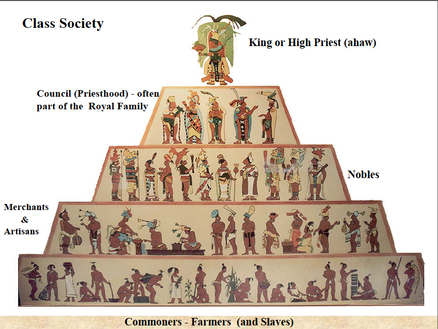
The Mayan social structure, which was strictly maintained because of religion.
Class structure in the ancient Mayan civilization was dictated by a patriarchal birth system of kings and his religious followers. At the highest of the social ladder, was the Ajaw, who was in charge for the internal and foreign relationships throughout their city state. The Ajaw also played an extremely important role in the religious rituals, customs, and architecture of the Mayans. Large architectural projects such as the Tikal Temple in Tikal, signify how strong the Ajaw’s rule was and how dedicated the people were to their rule. In order to maintain their control and devotion from the people, they played a large role in the religious and cultural aspects of the people. Blood from the Kings and the royal family was considered sacred in their culture. Kings would partake in bloodletting rituals and sacrifices to ensure that the gods looked kindly upon the Mayan people. Their large influence in the extremely strict religious culture of the Mayan people ensured that they would hold a position of power because of the supernatural repercussions that were alleged to occur if you disobeyed their order. Following the Ajaw in the Mayan social structure was the Noble family. The noble family, or Almehenob, had many of the same responsibilities that the Ajaw had. However, the Almehenob, instead of ruling over a large area or city state, ruled over a smaller area as local magistrates, overseers for small towns, or was able to partake in larger decisions in the state council for the Ajaw. Also like the Ajaw, the Almehenob was was a social class dictated by birth and movement from lower social classes into the noble classes was nearly unheard of. Priests were the class of people below the noble family. Priests in the Mayan society played the same role as scribes in many other Eurasian civilizations. Priests were responsible for many things such as mathematics, hieroglyphics, religious ceremonies and sacrifice, and religious teachings. Priests, similarly the Almehenob, had a chance to aid the Ajaw in decisions through the state council. Artisans and merchants fall after the Priests in the Mayan social hierarchy. This social class played nearly the same role as artisans and merchants from other civilizations. They were responsible for trading and gaining wealth for the nation while also designing temples and other building projects for the Ajaw or Almehenobs. Finally, the lowest social class in the Mayan civilization, were the peasants and slaves. The peasants made up the largest portion of the Maya civilization and were largely responsible for agriculture and manpower. It was possible for peasants to become servants or slaves to the king however this was decided by the noble family and was difficult to accomplish. Slaves in the Mayan society were treated poorly, often used for religious sacrifices and hard labor. It was not uncommon for prisoners of war to have their heart ripped out from their bodies or other mutilating wounds inflicted during religious rituals.
Influence on ReligionBecause religion played such a large role in the Mayan society, the influence that the social classes had on religion also followed. Accordingly, the Ajaw had the largest role in the religious rituals in the Mayan civilizations. Their blood was looked upon as extremely precious and was given as an offering to the gods during large important religious rituals. It was not uncommon for Mayan Ajaw to perform gruesome acts of self sacrifice such as stringing a barbed rope through their tongue to draw out their blood. The willingness for such large self sacrifice was important for the Ajaw because of exemplified their connection to the supernatural and the gods, which allowed them to be feared and respected by their people. The Almehenob were similar to the Ajaw in the fact that they played a large role in the religious sacrifices in the Mayan religion. The Almehenob ruled over the religious rituals of smaller importance or cities, and often, like the Ajaw, took part in the rituals because of their sacred connection with the gods through their blood. The Priests in the Mayan society were extremely important because it offered the connection between the Ajaw and the common people of the civilization. In areas where large scale bloodletting ceremonies involving the Ajaw or Almhehenobs were not present, the priests would be the ones who would perform the rituals. Priests were divided into sections which dictated their role throughout the religious ceremonies. The nacom for example, were the priests responsible for removing the heart out of sacrificial victims while the chacs and ahmen acted as prophets and passed on the word of the gods to the people. Common lower class citizens such as merchants, artisans, and peasants played little role in the religious sacrifices. However, it was not uncommon for the Mayan priests to use slaves as ritualistic sacrifices when prisoners of war or other sacrifices were not available.
|
The Persian Empire
Basics
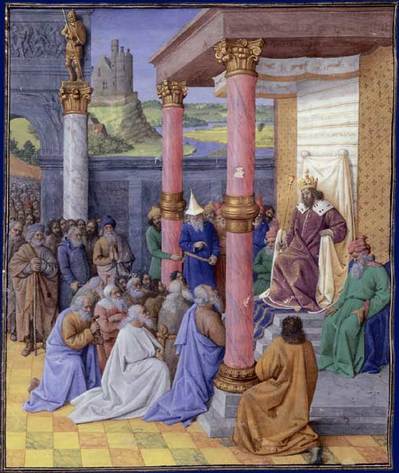
Cyrus the Great liberating the Hebrew people and showing religious tolerance.
The Persian social structure was dominated by the King, who ruled over the military, internal, and foreign decisions of the overall nation. The determination of kingship was largely through birth. However, there were times throughout the Persian Empire where a successor would not be named and internal conflict would break out. The Persian kings strong leadership was key to their expansion and power, shown by Darius and Xerxes, who both were extremely influential and successful leaders. Kings in Persia had the final say on all decisions, and showed their power through large palaces like the ones found in Persepolis. Because the Persian Empire was so large, the Persian kings employed family members and trusted advisors to rule over smaller areas and states of Persia. These people fall into the next social class of ancient Persia. The rulers of these individual areas were treated similar to how the king was treated, in which they had complete governing control of the area and were treated with great respect from the people living inside the cities. Following the King and his rulers, were the Priests. Priests in Persian society played an extremely large role because they were the people who had the responsibility to pass on the words of the king and the words of the religion to the people. The king used the priests to unify the nation much more successfully because he used them to pass on religious tolerance of other religions, such as Judaism. After conquering an area, priests were vital to the king because they were the people who would interpret the new religions and pass them onto the people of Persia. The priests allowed the king to secure his power by tying in his rule with religion, which created a sense of worship throughout the people. Priests were looked very highly upon and it was a great honor to be able to become one. However, there was very little chance for any other class besides the nobles and the aristocrats, who were the wealthy elite and beneath priests, to become a priest. Aristocrats in the Persian society were extremely wealthy citizens that were often granted special privileges by either the noble family or the king himself. Aristocracy in Persian society was very rigid, and offered very little to no chance for social movement up into this class. Aristocrats were often the leader of many families and had influence and wealth throughout a large area, which protected them from losing their influence. Following the Aristocrats were the military leaders and soldiers. Because Persia was such a large empire, the requirement for an extremely strong military was vital. Since the military was so extremely necessary, successful military generals or soldiers were looked very high upon by the people and king. The next step in the social ladder is influenced largely because of Persia’s pristine location in Eurasia. Traders and merchants were able to become extremely successful and wealthy because of Persias ability to trade with the European empires throughout the mediterranean and also the Asian empires throughout India and China. Merchants played little role in the politics of Persia and were often confined to the larger cities, they made up a medium portion of the population however a large part of the population were considered craftsmen and peasants. In Persian society craftsmen had slightly higher social importance than peasants because of their ability to construct monuments and building projects for the king, however, there were so many of them that the chance for large monetary gain being a craftsman was low. Peasants on the other-hand were generally confined to the farms to feed the people in the cities or themselves. The Peasant class was dominated by males because they were the ones who would do most of the farming or field work while the women would be the one caring for the household. Most peasants were extremely poor and lived in poor living conditions, however, they were better than slaves of other civilizations.
Impact on the king
The Persian Empire, being as large as it was, had an elaborate social structure that was based largely on the influence people had in political decisions or other internal decisions. At the top of the social ladder stands the king, who respectively has the most power out of any other social class. However, because there were so many and so different states within Persia, the king had to be completely sure that the people ruling the states would be trustworthy to the king and the king alone. The king employed spies, which were an extremely small group of people that were very important to the king to spy on the people he appointed ruler. The use of spies to secure his rule showed the measures that the king had to go through to continue his reign over the empire. The Priests in ancient Persia also were very high on the social ladder because of their use by the king. Priests were the people who passed his law onto the people by both writing his laws and translating religious texts. Without the Priests it would be extremely difficult for the word of religion and the laws of the king to reach the far boundaries of the large empire. Because of their importance, they are generally ranked higher than the aristocrats, who one might think should be ranked higher because of their large amount of wealth. Although the military also had an extremely large importance to the king, they can be seen lower than the aristocrats because the monetary gap between the two classes is generally too high to ignore. As the social classes continue to fall, the influence becomes less and less and more about profession and wealth, which explains the remaining order of merchants, craftsmen, and peasants.
Compare and Contrast
Similarities
|
Differences
|
Citations
McManus, Barbara F. "Roman Social Class and Public Display." Roman Social Class and Public Display. N.p., Jan. 2009. Web. 03 Nov. 2012. <http://www.vroma.org/~bmcmanus/socialclass.html>.
No Author. "Decline of the Roman Empire." Wikipedia. Wikimedia Foundation, 11 Sept. 2012. Web. 09 Nov. 2012. <http://en.wikipedia.org/wiki/Decline_of_the_Roman_Empire>.
No Author. "Significant Economic and Social Developments in Hellenistic Period." Significant Economic and Social Developments in Hellenistic Period. Booking.com, n.d. Web. 08 Nov. 2012. <http://www.greek-thesaurus.gr/hellenistic-age-economic-social.html>.
No Author. "Society and Culture of the Han Dynasty." Wikipedia. Wikimedia Foundation, 11 July 2012. Web. 08 Nov. 2012. <http://en.wikipedia.org/wiki/Society_and_culture_of_the_Han_Dynasty>.
Strayer, Robert W. Ways of the World: a Brief Global History with Sources. Boston: Bedford/St Martin's, 2010. Print.
"Maya Social Classes." Wikipedia. Wikimedia Foundation, 11 Jan. 2012. Web. 09 Nov. 2012. <http://en.wikipedia.org/wiki/Maya_social_classes>.
"Ancient History: Persian Society in the Time of Darius and Xerxes." HSC Online. Charles Sturt University, n.d. Web. 09 Nov. 2012. <http://hsc.csu.edu.au/ancient_history/societies/near_east/persian_soc/persiansociety.html>.
"Caste." Wikipedia. Wikimedia Foundation, 11 May 2012. Web. 09 Nov. 2012. <http://en.wikipedia.org/wiki/Caste>.
No Author. "Decline of the Roman Empire." Wikipedia. Wikimedia Foundation, 11 Sept. 2012. Web. 09 Nov. 2012. <http://en.wikipedia.org/wiki/Decline_of_the_Roman_Empire>.
No Author. "Significant Economic and Social Developments in Hellenistic Period." Significant Economic and Social Developments in Hellenistic Period. Booking.com, n.d. Web. 08 Nov. 2012. <http://www.greek-thesaurus.gr/hellenistic-age-economic-social.html>.
No Author. "Society and Culture of the Han Dynasty." Wikipedia. Wikimedia Foundation, 11 July 2012. Web. 08 Nov. 2012. <http://en.wikipedia.org/wiki/Society_and_culture_of_the_Han_Dynasty>.
Strayer, Robert W. Ways of the World: a Brief Global History with Sources. Boston: Bedford/St Martin's, 2010. Print.
"Maya Social Classes." Wikipedia. Wikimedia Foundation, 11 Jan. 2012. Web. 09 Nov. 2012. <http://en.wikipedia.org/wiki/Maya_social_classes>.
"Ancient History: Persian Society in the Time of Darius and Xerxes." HSC Online. Charles Sturt University, n.d. Web. 09 Nov. 2012. <http://hsc.csu.edu.au/ancient_history/societies/near_east/persian_soc/persiansociety.html>.
"Caste." Wikipedia. Wikimedia Foundation, 11 May 2012. Web. 09 Nov. 2012. <http://en.wikipedia.org/wiki/Caste>.
